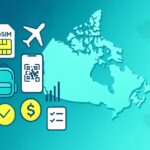Times have changed, but I did it: PR in Ontario while working at a convenience store. Here’s how I went from landing as a student to Canadian citizenship.
Moving to Canada was challenging for me initially. I had already graduated back home but didn’t have any close relatives in the country. When I was planning my move, I honestly had no idea how I was going to survive here, lol.
Thankfully, someone who was a senior at my university had moved to Canada a year ahead of me. I reached out to him, and he shared some advice. He seemed helpful at first, but his attitude changed as my arrival date got closer.
My study visa was approved on April 12, 2016, so I immediately told my senior. I asked him when he might be free to advise me on booking my flight ticket. He just said, ‘I’ll let you know,’ but then I didn’t hear from him for several days. I started to get worried because my classes were starting on May 4th.
After waiting with no response, I decided to look for other options. I began searching for student housing or a basement apartment to rent near the airport. My backup plan was to book a hotel for the first few days and figure things out once I landed.
Luckily, I connected with my old school friend’s younger brother. He was incredibly helpful and gave me his address right away. He mentioned that he would be at work on the day I arrived, but he told me, ‘Just take an Uber to my place, get some rest, and I’ll see you in the evening.

Student Life: Getting Started
Everything went smoothly after I landed. I got my SIN and SIM card the very next day, and my co-op work permit was even issued right at the airport. I opened the bank account same day.
My student life was great. I had a part-time job with a construction company where I worked 16-20 hours a week. The work was outdoors, so we couldn’t work when it rained. This meant that on some weeks, especially if it rained on my day off from college, I might only get 8 hours in. Still, it was a decent-paying job, so I was able to save some money for my tuition fees.
Work & Work Experience
My co-op placement, which was during my final semester, required me to be in the office three days a week. Since the four-month co-op was unpaid, I also picked up a part-time job at a convenience store that winter to earn some money.
As I neared graduation, my focus shifted to finding a pathway to permanent residency (PR). After a lot of searching, I found an online job posting for a convenience store in Northern Ontario. I called them, highlighting my previous experience. My research showed a clear strategy: if I took the job, worked hard, and earned a promotion to a ‘NOC B’ skilled position, I would have a strong chance of getting PR through the Express Entry system.
I joined their team as a cashier in March 2018, starting on the night shift. I worked nights for about three to four months before they moved me to the day shift. Then, after just another two or three months on days, I earned a promotion to assistant manager.
After working as an assistant manager for over a year, I was finally ready to create my profile for the Express Entry pool. There was a slight delay because I still had to take my IELTS exam, but once I did, my Comprehensive Ranking System (CRS) score was 459.
Seeing that the cut-off score for the previous draw was only 455, I was confident I would receive an Invitation to Apply (ITA) in the next round. Back then, draws were held consistently every two weeks. To my frustration, however, they paused the draws for almost a month. That delay changed everything. When they finally held the next draw, the minimum score had jumped to 471, well above my score.
To make matters worse, the score in the next draw jumped even higher to 495, as they only invited around 3,500 candidates. In the end, it took a stressful four months of waiting before I finally received an invitation. The cut-off score for that draw was finally dropped back down to 457.
Read: Interior Design Courses in Canada for International Students
Canadian PR While Working in a Convenience Store
Once I received my Invitation to Apply, I began gathering all the necessary documents for my permanent residency application. In addition to the official forms provided by Immigration, Refugees and Citizenship Canada (IRCC), I submitted the following documents:
- Passport
- Police clearance certificates (PCC)
- Educational Credential Assessment (ECA) report
- Copies of degrees, diplomas, transcripts
- IELTS General Training
- Employment reference letters
- Pay stubs (4 recent), T4
- Upfront medical exam
- Digital photos
- Biometrics (I did it later on when they requested)
Read: Best International Money Transfer Apps for Students
After submitting everything, it was just a matter of waiting. The first update came after about four or five weeks when my medical exam results were posted on the online portal. The biometrics request didn’t arrive until about three months after my initial submission. All in all, the entire process from submitting the application to receiving the final approval took six months.
However, the Express Entry system is very different now. Today, draws are mostly category-specific, targeting candidates with certain skills or in particular occupations. When general draws do happen, the minimum CRS score required is typically very high.
It’s still possible to get PR with a background as an assistant manager or manager, but boosting your CRS score is essential. To do this, you’ll likely need one or more of the following:
- A high score on your IELTS exam
- Proficiency in French
- A master’s degree (from Canada or your home country)
Additionally, combining at least one year of foreign work experience with your Canadian work experience is a key strategy for achieving a competitive score.
Conclusion: Landed in 2016 and got PR in early 2021. Everyone’s PR journey is different, and sharing tips can really help others. What part of the process has been the hardest for you so far? Let’s discuss in the comments!









